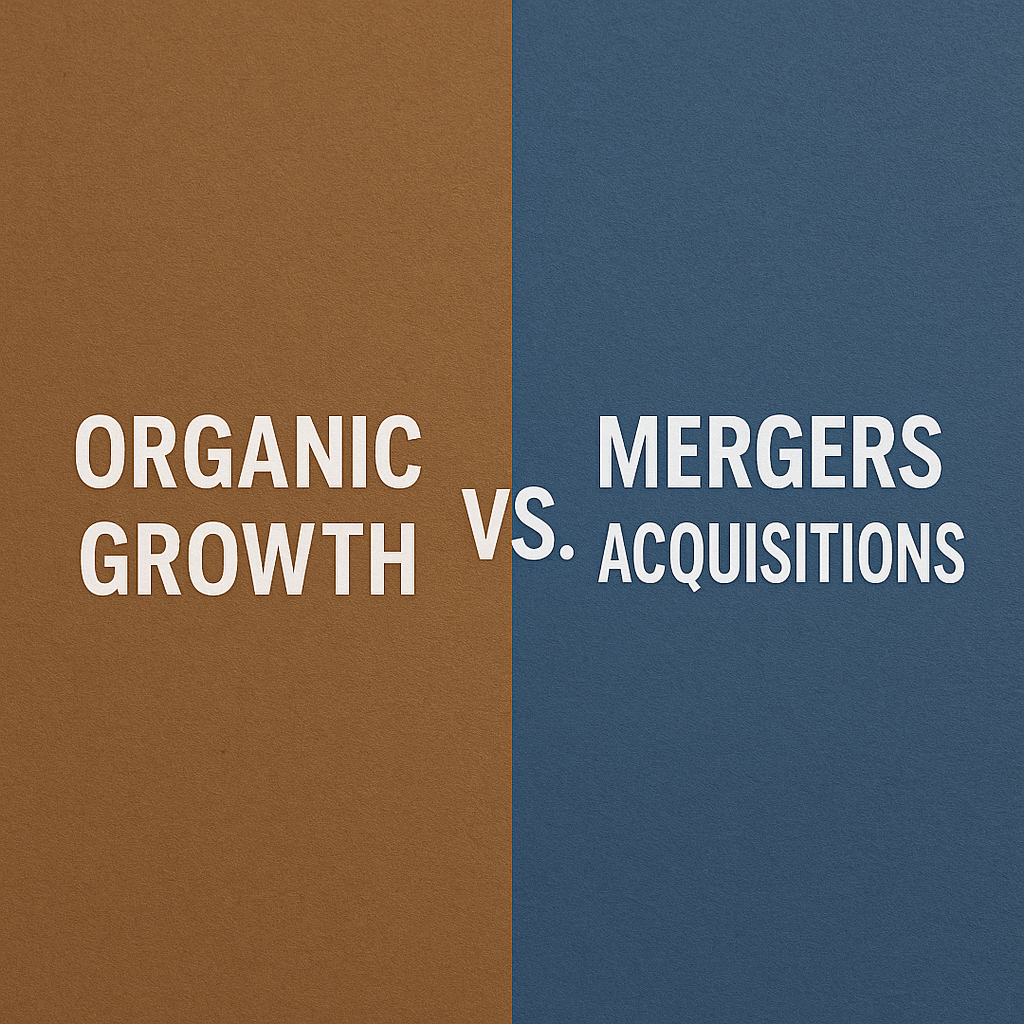Private Company Valuation Guide: How To Calculate What Your Business Is Really Worth
Understanding how to value a private company is essential, whether you’re preparing for a sale, securing investment, planning a leadership...
Mergers and acquisitions (M&A) are powerful strategies that enable businesses to grow and adapt. While the potential benefits of M&A are significant, the process itself is highly complex. A clear understanding of the 5 stages of mergers and acquisitions is essential for ensuring success.
This blog discusses the phases of mergers and acquisitions, highlighting the necessary steps to execute a successful transaction. Whether you are an entrepreneur, investor or corporate executive, understanding these steps in the M&A process will help ensure a smoother journey.
Let’s get started.
The merger and acquisition process begins with identifying the company’s long-term objectives and understanding how an M&A transaction fits into these goals. Without a well-defined strategy, M&A efforts risk becoming directionless and inefficient.
Key activities in this stage include:
A well-structured strategy ensures that the subsequent M&A phases are aligned with the company’s vision.
Once potential targets are identified, the process moves to the initial contact stage. Communication between the buyer and the target company begins with confidentiality agreements, which protect sensitive information and build trust between the parties.
Key steps during this stage include:
Negotiation follows once both parties agree to proceed. The focus shifts to determining the deal structure, which involves pricing, payment methods and timelines. Effective negotiation requires balancing financial considerations with long-term strategic goals. Both parties must aim for fairness and transparency to foster collaboration.
The due diligence phase is one of the most critical M&A process steps. It involves a comprehensive evaluation of the target company to uncover potential risks and validate the information provided during negotiations. Failure to conduct thorough due diligence can lead to costly mistakes.
Key components of due diligence include:
This phase requires collaboration between legal, financial, information systems, and operational experts. Findings from due diligence can lead to renegotiation of terms or even the decision to walk away from the deal.
Once due diligence is complete, the focus shifts to formalizing the deal. This stage in the merger and acquisition process involves preparing and signing legal agreements that document the terms of the transaction. Attention to detail is critical, as these agreements form the legal foundation of the deal.
Key activities include:
Proper execution during this stage ensures a smooth transition to the final phase.
Integration is the final and most challenging phase of mergers and acquisitions. This stage determines the long-term success of the transaction. It involves merging the operations, systems and cultures of the two companies.
Key elements of integration include:
Post-merger management often requires continuous effort over months or even years. Companies that invest time and resources in this phase are more likely to achieve the desired outcomes of the merger and acquisition process.
The 5 stages of mergers and acquisitions are intricate, but implementing key strategies ensures better outcomes. Here are practical for smooth execution and long-term success.
An experienced team is crucial for navigating the M&A process. Financial advisors assist with valuations and deal structures, while legal counsel ensures regulatory compliance and drafts contracts. Operational leaders assess workflows and identify integration challenges. A strong team minimizes risks and ensures thorough execution at every stage.
Clear communication is vital throughout the merger and acquisition process. Miscommunication causes confusion, delays and mistrust. Internal updates keep employees informed and engaged, reducing uncertainty. Regularly communicating with customers and suppliers reassures them of continuity. Transparency with stakeholders builds trust and prevents resistance to the transaction.
Cultural differences often derail mergers. Evaluating cultural fit early in the M&A phases helps address potential conflicts. Use assessments to identify alignment in values and work practices. Engage employees from both organizations to foster collaboration. Establishing a unified culture post-merger strengthens morale and promotes productivity.
Develop a roadmap to align systems, processes and teams. Identify potential synergies, such as cost savings and operational efficiencies. Assign leadership roles to drive integration efforts and maintain accountability. A strong integration plan minimizes disruptions and accelerates results.
Talent retention preserves institutional knowledge and ensures operational continuity. Offering incentives, career growth opportunities and transparent communication helps retain key employees. Prioritizing employee satisfaction during the integration process fosters loyalty and reduces turnover.
Leveraging advanced tools enhances efficiency and precision throughout the M&A process. Purpose-built M&A software simplifies data sharing, streamlines project management and ensures seamless deal tracking. In addition, advanced analytics deliver actionable insights into financial and operational performance, enabling informed decision-making at every stage.
Post-merger performance tracking ensures strategic goals are met. Define success metrics such as revenue growth, cost savings or customer retention. Conduct regular reviews to assess progress and resolve challenges. Monitoring KPIs allows businesses to adapt and refine strategies for better outcomes.
Following these practical tips ensures success in each phase of mergers and acquisitions, driving long-term growth and value.
Understanding the phases of mergers and acquisitions helps businesses identify opportunities, mitigate risks, and achieve their goals. While the journey can be challenging, the rewards of a successful M&A transaction often justify the effort. With careful execution of these 5 stages of mergers and acquisitions, companies can unlock growth, innovation and long-term value in today’s competitive landscape.
Don’t leave your M&A process steps to chance. Partner with Wilcox Investment Bankers to ensure every stage of your transaction is handled with care, expertise, and professionalism. Contact us today for a consultation.

Understanding how to value a private company is essential, whether you’re preparing for a sale, securing investment, planning a leadership...

Growth is a top priority for small business owners. Whether you’re capitalizing on early success or aiming to scale, your chosen growth strategy...

Mergers and acquisitions (M&A) are powerful strategies that enable businesses to grow and adapt. While the potential benefits of M&A are...

2 min read
Owners considering a business sale can take proactive steps that will greatly enhance the value of their business. As a boutique investment bank...

2 min read
When investment banks or merger and acquisition (M&A) advisors pitch for new business, they often try to differentiate themselves based on the...

2 min read
A competitive industry filled with convergence, technological changes, ongoing disruption, and pressure to stay competitive has pushed dealmakers to...